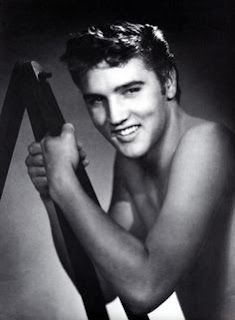Laura Mulvey says that “cinema
promotes narcissism and scopopholia.” Scopopholia can be defined as the love of
looking. It has a direct relationship to stardom as “being looked at” is what
stars do best. Voyeurism plays a huge role in star consumption. If there are no
spectators, there is no arena and there are no stars. We see with Valentino,
Marilyn, and Madonna how voyeurism can utilize, and be utilized by, a person in
the limelight.
All three personas were marketed
and consumed as heartthrobs. Valentino was marketed to the public as the sexy
Latin, produced as a product for female consumption. Historically, objects of
the female gaze (however few) have been men of color, although there are of
course exceptions such as Arnold Schwarzenegger, who was publicized as a
self-made man – a man who built himself up, a personification of the American
dream (on a very personal level, for building one’s body affects just that
person). In relation the camera, Schwarzenegger, generally looking at rather than being looked at. Men of
color and women (whether white or of color) are looked at by the camera.
Elvis and Marilyn were considered
sex icons and commanded attention by their winks and hip thrusts. Voyeurism is
largely linked to sexuality. Pornography, an industry that took off alongside
the film industry, relies heavily on a male spectator; the camera is a tool for
looking, and sex sells.
To familiarize audiences with
Marilyn before she became a household name, studios circulated sexualized images
of her, similar to those in Playboy and other “girlie” magazines. In each of
Marilyn’s films, she is the object of the male gaze; however much she may work
this objectification to her advantage, she is made a spectacle for voyeuristic
consumption. As males, Elvis and Valentino were not as explicitly objectified,
however, the cameras gazed on them more than they did Marlon Brando or James
Dean or other macho-man figures. Studios negotiated these stars’ sexuality by
keeping it within the constraints they set up. If Marilyn was to be sexual, she
had to be so within the boundaries of a patriarchal narrative. If Elvis were to
shake his hips and sing about sex, he had to do so as an object for people to
consume. If Valentino was to star in films as a Latino male, he had to do so
with the camera gazing upon him. I would argue that none of these three stars
commanded the attention they garnered as much as they reacted to the limelight being
shined onto them.




No comments:
Post a Comment
Note: Only a member of this blog may post a comment.